I never thought I’d be curious about how malt vinegar is made until I found an old bottle in my pantry.
My friend, who’s into brewing beer, told me it’s not just possible, it’s surprisingly simple if you’ve got time and patience.
That one conversation turned into a full-on project. I tried it myself, messed up a bit, and learnt a ton.
Now I want to walk you through it the way I wish someone had done for me—no. Just real steps, real results.
What Is Malt in Vinegar?
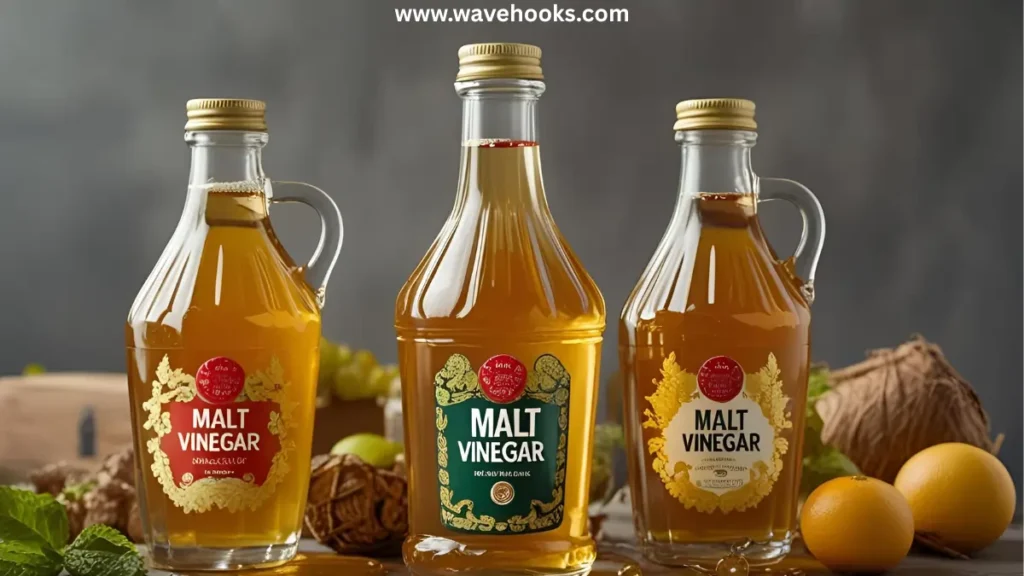
This one confused me, too. So, what is malt in vinegar? In simple words:
Malt comes from barley. Here, barley grains are soaked, sprouted, and dried. This process is called malting.
The malt is turned into beer. This beer becomes the base for the vinegar.
Malt adds flavour – it gives a sweetness and richness that plain white vinegar doesn’t have.
That deep brown colour and smooth taste? That’s all from Malt. It’s vinegar that started its life as malted grain.
Suggested Read: Why Does Malt Vinegar Smell Bad? Unmasking The Hidden Cause!
Is Malt Vinegar Halal?
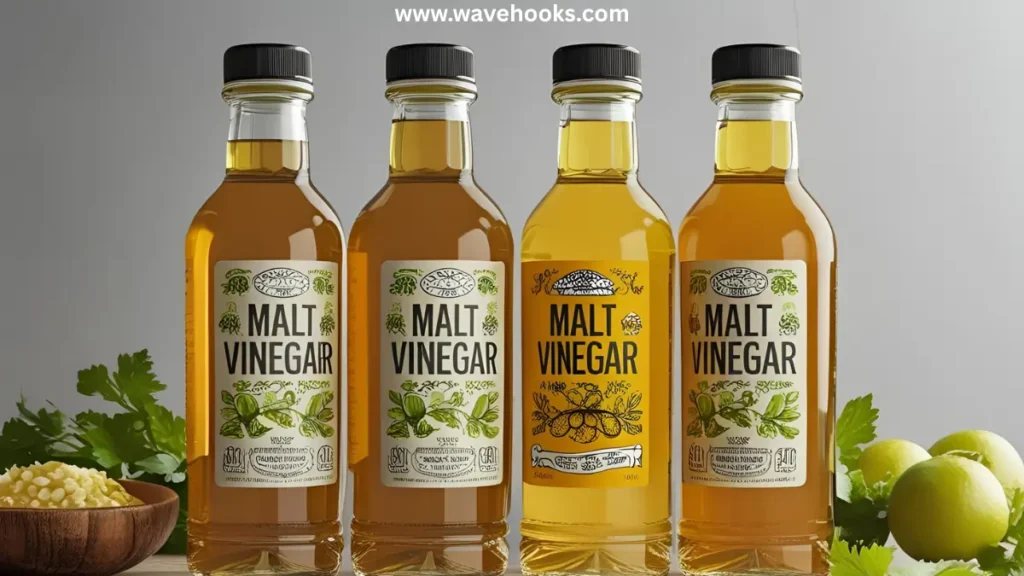
A common concern I hear is, Is malt vinegar halal? Here’s what I learnt:
Yes, it can be halal, as long as all the alcohol is turned into acid during fermentation.
It’s not alcoholic – Even though it starts as beer, mature vinegar doesn’t contain alcohol.
Time is key. Let it ferment fully, usually 6 weeks or longer, to be safe.
I checked with a friend who eats halal, and once I explained the process, he was happy to try the batch I made.
Suggested Read: Does Rice Vinegar Go Bad If Not Refrigerated Overnight?
What Is Malt Vinegar Made From?
Malt vinegar is made from malted barley, beer, and a natural process that takes a bit of time.
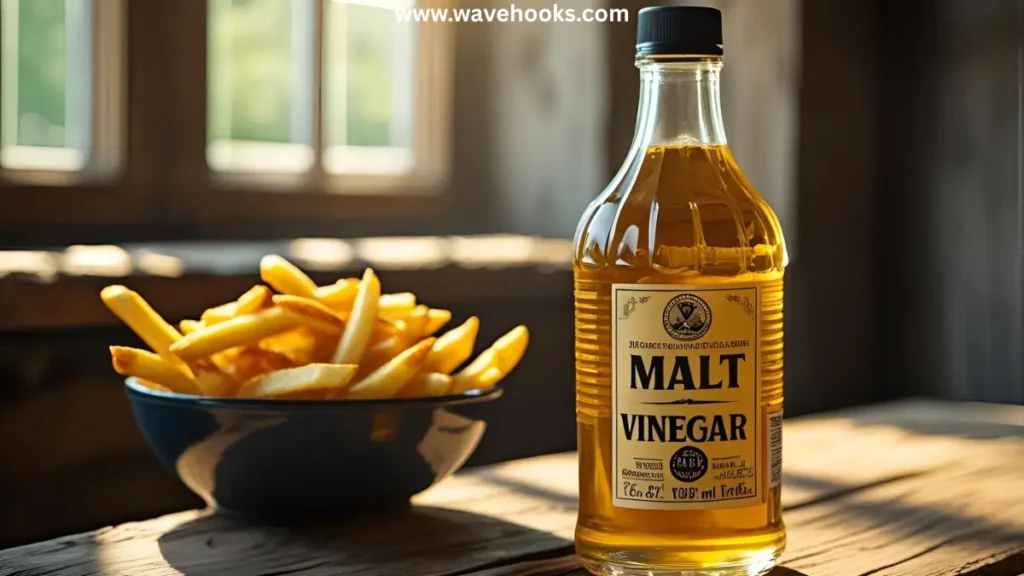
Let’s break it down clearly and simply:
1. Malted barley – This is barley that’s been soaked in water until it starts to sprout. Then it’s dried. This step helps turn the starch into sugar, which is what we need to make alcohol later.
2. Beer – Once the malted barley is mashed and brewed with water and hops, yeast is added. The yeast eats the sugar and turns it into alcohol. Now you’ve got beer.
3. Vinegar – To turn the beer into vinegar, we add something called a “mother” or raw vinegar. That contains helpful bacteria called acetic acid bacteria, which slowly eat the alcohol and turn it into acid. That’s what makes vinegar sour.
4. Time – This is the most important ingredient. You can’t rush good vinegar. The bacteria need weeks to do their job fully.
So basically, it’s a two-step fermentation: first beer, then vinegar. It’s science, but the kind that happens right on your countertop.
Suggested Read: Will Vinegar Kill Grass? 10 Shocking Results Revealed Now!
How to Make Malt Vinegar from Beer
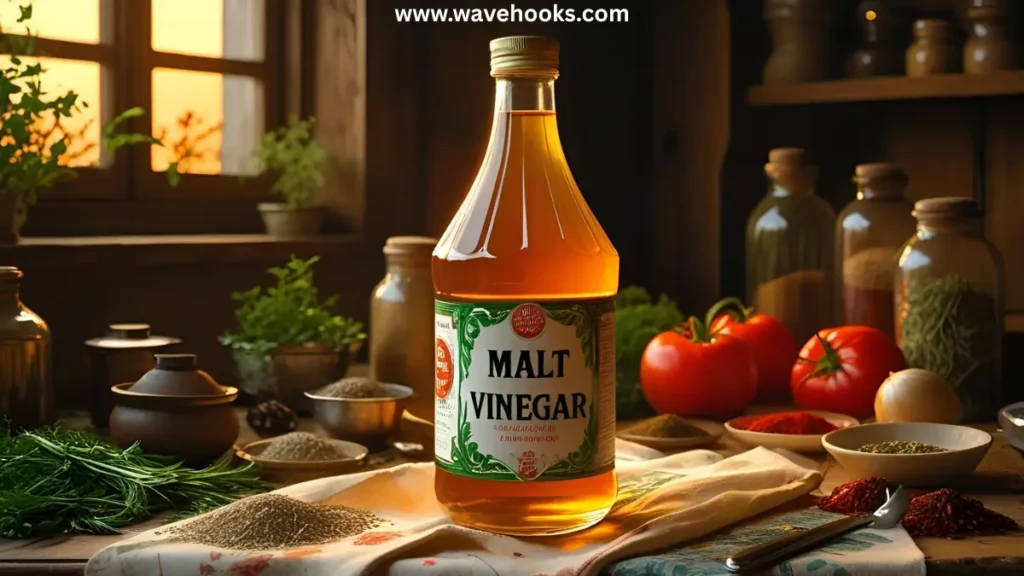
If you’re like me and always have a leftover bottle of beer sitting in the fridge! Here’s exactly how I did it at home:
Choose a mild beer – Skip IPAs or anything bitter. I used a pale ale, and it worked great.
Pour into a wide-mouthed glass jar – Something like a pickle jar or a big mason jar.
Add raw vinegar – I used 2–3 tablespoons of unfiltered apple cider vinegar with the mother. This kickstarts the fermentation.
Cover with a cloth – I used a clean dish towel and a rubber band. You want air to get in, but bugs to stay out.
Put it somewhere warm and dark – Mine went on top of the fridge, in a cupboard. It sat there for 6 weeks.
Check weekly – After 4 weeks, it started to smell more like vinegar than beer. By 6 weeks, it was perfect.
Strain and bottle – I used a sieve and funnelled it into a clean vinegar bottle I saved from the store.
I now use it for chips, marinades, and even in salad dressings. It’s got a richer flavour than anything I’ve bought.
Suggested Read: Can I Add Vinegar To My Laundry For A Fresh Smell? Must Read
A Beginner-Friendly Malt Vinegar Recipe Using Malt Extract
If you can’t use beer, don’t worry. I tried this easy method, and honestly, it was even better.
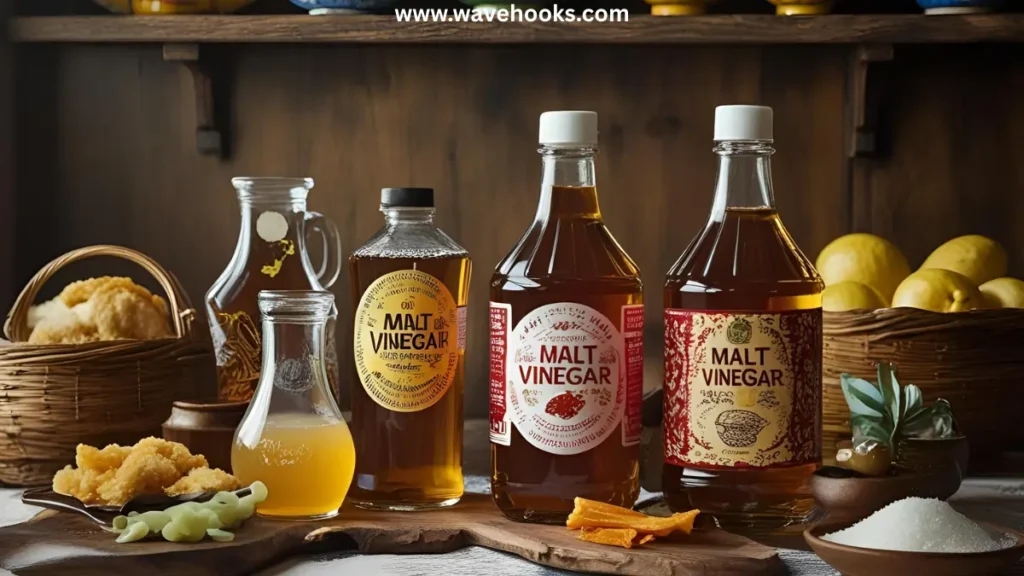
Here’s how it works:
- Boil 2 cups of malt extract with 6 cups of water. Let it cool down to room temperature.
- Add brewer’s yeast. Let it sit in a jar with a lid slightly loose for about a week. It’ll bubble and foam—this means alcohol is forming.
- After the bubbling stops, add vinegar with mother, and add 1/2 cup of apple cider vinegar to help it ferment into vinegar.
- Cover and let sit. Use a cloth to cover the jar and leave it in a warm spot.
- Wait 6 weeks. Taste it around week 4. Mine was a bit too sweet early on, but by week 6, it had the perfect tang.
- It’s perfect for dishes like roast potatoes or gravy.
Can You Make Malt Vinegar?
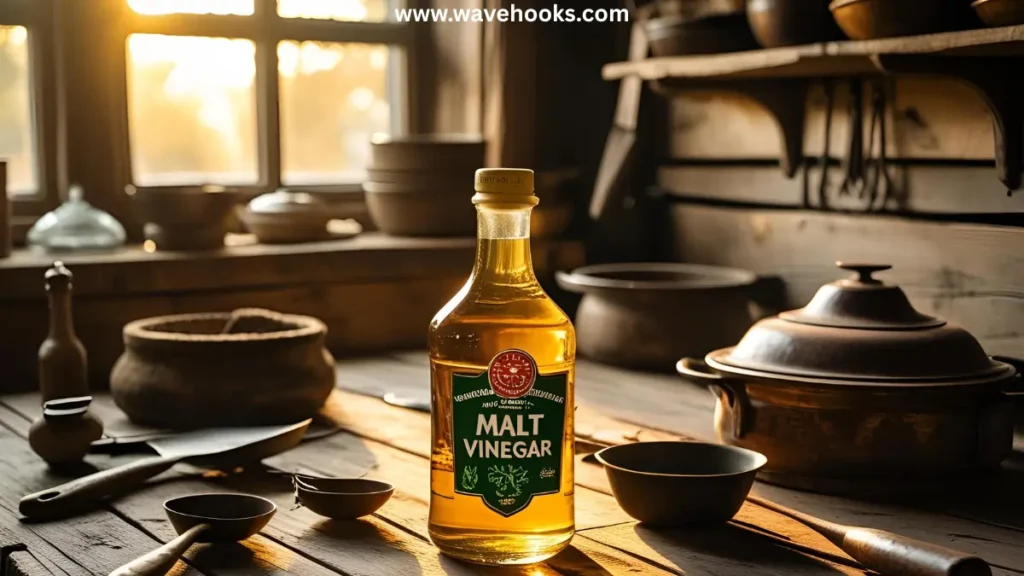
Let me tell you, you don’t need equipment or a science degree. You just need ingredients and a little patience.
Once you make it, you’ll see vinegar as something living, not just a cooking ingredient.
Here’s why it’s worth trying:
- It saves money, and it is prepared with leftover beer and can be used for months, even years.
- If you want it sweeter, let it age longer. If you want it stronger, add more malt or beer.
- Store vinegar sometimes has added preservatives or flavouring. Yours won’t.
- It’s a fun project, like brewing beer or fermenting pickles; it feels rewarding.
Suggested Read: Can You Freeze Tortillas? What Happens Will Truly Shock You!
How to Make Malt Vinegar for Fish and Chips
I made a batch specifically for this purpose.
Tips to get it right
Use a lighter beer – Pale ale or light lager is best. Avoid dark beers.
Add sugar – Just a teaspoon. This balances the sharpness and gives a slightly sweet finish.
Let it age longer – I found that 6 to 8 weeks made it smoother.
Try flavour infusions – A bay leaf or a little garlic can give it a fine taste.
Don’t overdo it – you don’t want overpowering vinegar. Just enough to enhance the flavour.
How to Make a Substitute for Malt Vinegar
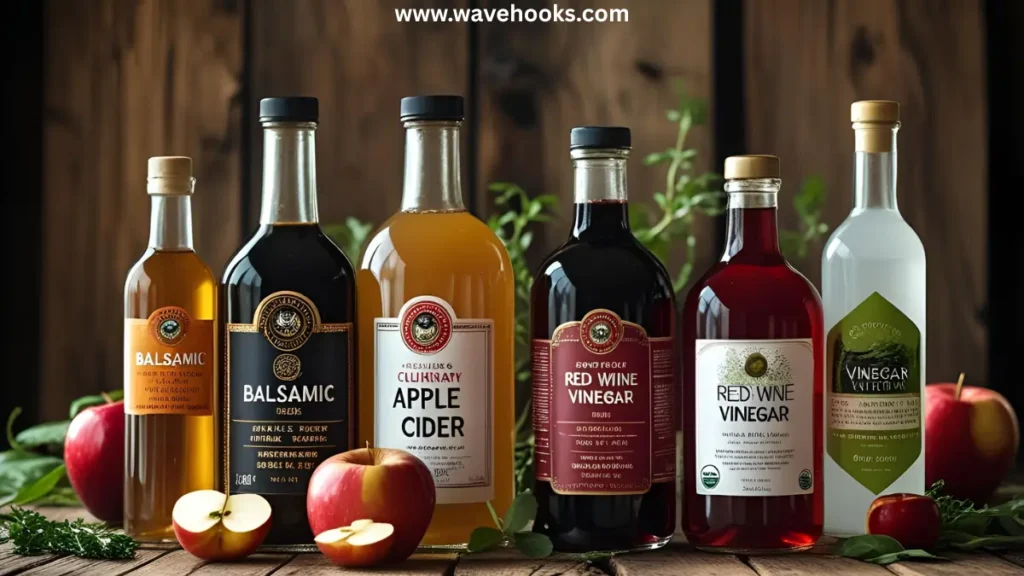
If you’re in a busy, you can make a decent malt vinegar substitute with what you’ve got at home.
None of these are perfect, but they’ll work in recipes where you just need a bit of tang.
Here are some quick swaps I’ve tried:
- Apple cider vinegar & soy sauce – It adds depth and colour. Use 2 parts cider vinegar to 1 part soy.
- Rice vinegar & a dash of molasses – Tastes sweet and rich, similar to malt.
- White vinegar & splash of beer – Let it sit for a few hours to blend.
Suggested Read: Does Vinegar Kill Roaches Fast? 10 Surprising Facts You Need!
Why Is Malt Vinegar Hard to Find?
I started wondering why malt vinegar is hard to find in some stores. These are some of the reasons:
That’s why making it at home is not just fun—it’s practical if you love it.
- It’s not as popular globally, and also, not everyone uses it often.
- It takes longer to produce
- Low demand and low supply. So only a few make and sell it.
- Some people just don’t know how to use it, which means it sits on shelves less often.
How Is White Vinegar Made and How is It Different
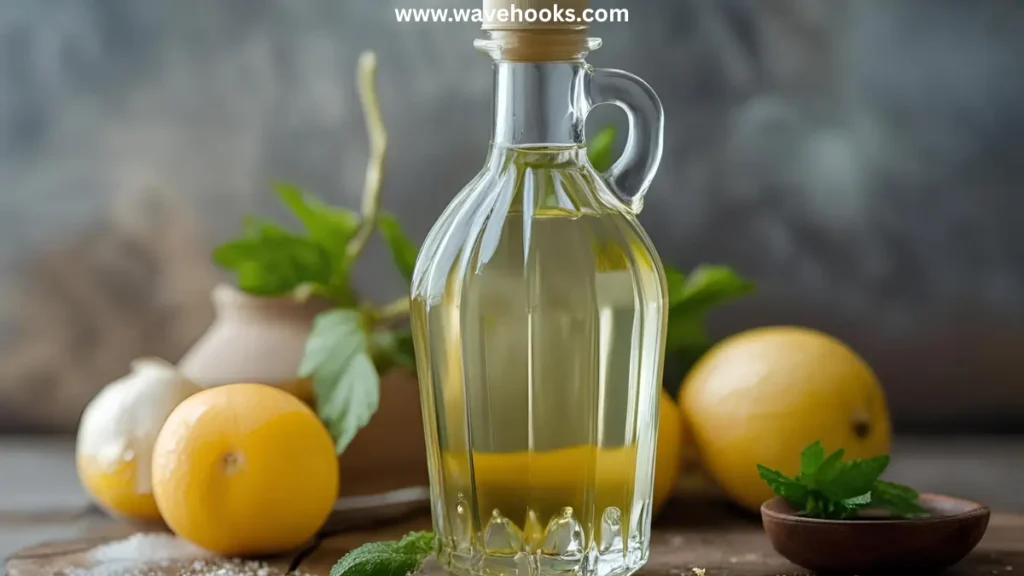
To understand malt vinegar better, it helps to ask: how is white vinegar made, and why does it taste so different?
Here’s what I found:
- Made from pure alcohol – Usually ethanol from corn or sugar beet.
- Fermented quickly – Often in just a few days, using special machines.
- Very sharp taste – It’s strong and has no extra flavours.
- Used for cleaning – It’s perfect for disinfecting or pickling, but lacks the mellow taste of malt.
- It does the job, but it’s nothing like the deep, comforting flavour you get from aged malt vinegar.
Suggested Read: How To Prepare DIY Vinegar Cleaning Spray: The Ideal Solution!
Final Thoughts
I can say making malt vinegar is one of the easiest, most rewarding DIY kitchen projects I’ve ever done.
It costs next to nothing. It helps you waste less, like using leftover beer.
And the flavour is something you can’t get from store-bought bottles.
So if you’ve got a jar, a beer, and a few weeks of patience, give it a go.
You’ll be surprised how much better your food tastes and how proud you’ll feel every time you use it.
Suggested Read:
Can I Add Vinegar To My Laundry For A Fresh Smell? Must Read








One Comment